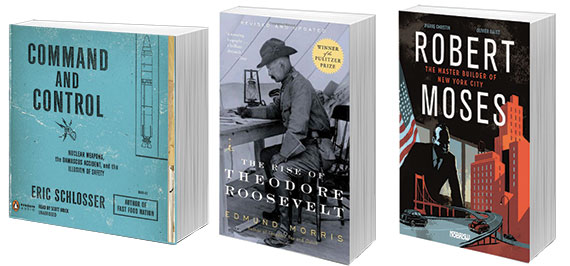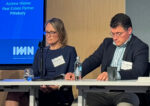Trending
What they’re reading now
Insights from the desks of Brian Ezra, Joshua Arcus and Jennie Lamensdorf

Brian Ezra
Co-founder, Avery Hall Investments
What are you reading right now, or what did you finish most recently?
I just finished “Little Failure,” a memoir by one of my favorite authors, Gary Shteyngart. I find his writing ceaselessly funny, poignant and tortuous. I recommend starting with “The Russian Debutante’s Handbook” if you haven’t read him yet. I also just picked up “Robert Moses: The Master Builder of New York City,” by Pierre Christin.
What was the appeal of the Moses book?
I am fascinated by the history of New York City’s development, and as required reading I wrestled my way through Robert Caro’s “The Power Broker” right after college. When I saw a new graphic biography on Robert Moses, I had to get it.
Has anything in it stuck with you?
Christin’s comic book-styled portrayal is both fascinating and entertaining and well worth a read. Moses remains a polarizing and controversial figure, and I think we will be debating his powerful legacy for years to come.
Joshua Arcus
President, Siderow Residential & Commercial Groups
What are you reading now?
The book I am reading now is “The Rise of Theodore Roosevelt,” by Edmund Morris, which is part of a trilogy on Roosevelt.
What spurred you to read the book?
I have a strong interest in NYC history and Teddy was a character in another book I was reading, “The Alienist,” which is historical fiction. His strong character and what he did in NYC fascinates me.
Has anything else in it stuck with you?
He definitely didn’t take no for an answer and never backed down from a challenge — whether it was by overcoming his illnesses, courting his first wife or becoming the youngest U.S. president and his general “don’t back down” work ethic. Strongly recommended.
Jennie Lamensdorf
Contemporary art curator, Time Equities
What did you finish most recently?
I just finished reading “Command and Control: Nuclear Weapons, the Damascus Accident, and the
Illusion of Safety,” by Eric Schlosser.
What spurred you to read that book?
I’m very interested in America’s atomic and nuclear legacy. I first started thinking about this subject in 2005 when I spent two months backcountry camping in the Southwest as part of my graduate studies in art history. It really changed my perspective of America. Typically, I look at this subject from an environmental and social perspective and in my work I’m very interested in artists who seek to make visible the invisible. [Similarly] the atomic legacy is generally invisible; we cannot see radiation, only its effects. “Command and Control” was my first foray into the subject from a military history standpoint.
Has anything you read in it stuck with you?
Schlosser, a journalist, wrote the book like a thriller. I got sucked in as if I was reading a novel. What sticks with me most is the broad message that we face a problem of our own construction and that denying something we cannot see (in this case classified documents and missiles, radiation damage, etc.) does not negate its existence. I think this can apply to so much in life; there are so many invisible forces that drive us: ambition, anxiety, fear, friendship, envy, love. And, in many ways, this is what art is about … making the invisible visible. Work I find successful typically works on two levels: It’s formally substantive (interesting to look at or experience) but it also has to confront or explode something I thought I already knew. A really powerful artwork will change your mind about the things you thought you knew best. I think this book is successful in the same way.




